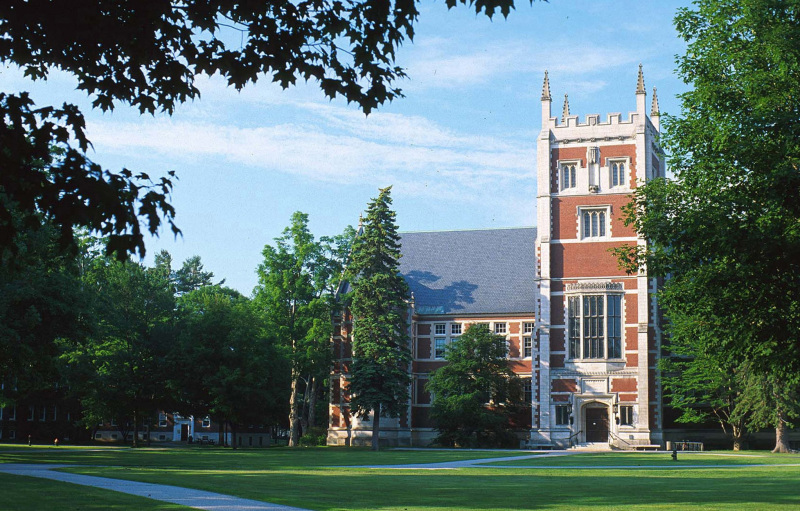
Photo: Bowdoin College. Retrieved from: www.wikidata.org
Bowdoin College houses almost 2,000 students, with the male student population almost equal to the female student population. The selectivity of Bowdoin College is among the highest in the country, with less than 20% of the applicants accepted into the system. Accepted students can expect the highest standards of education, and one of the most generous financial aid programs around.
At Bowdoin College, students can select from 33 majors and 4 additional minors. Student-professor interaction is dynamic, with a faculty:student ratio of 1:9. Bowdoin has produced some very distinguished alumni, including Joshua Chamberlain and Henry W. Longfellow, and is consistently ranked among the top liberal arts colleges in the country.
Bowdoin is the academic venue of choice for domestic and foreign students because of the quality of education and how conducive the campus is for focused and fun student living. Students may also enroll off-campus. The main campus of Bowdoin is located in Brunswick, ME. Besides the Brunswick campus, another Bowdoin campus is in a 118-acre land on Orrs Island, a center for coastal studies. Bowdoin owns a 200-acre property on Kent Island in the Bay of Fundy, which has been converted into a scientific field station.
School History
The school was chartered in 1794 by then-Massachusetts governor Samuel Adams, as Maine was a district of Massachusetts at that time. The name Bowdoin was adopted from the name of a former state governor James Bowdoin, whose son donated a sizable amount of money to the college. Bowdoin became a part of Maine when the state became independent.
Being one of the oldest and easternmost colleges in the US, Bowdoin has a rich history and has seen some of the most significant changes in the country. Its seal was created by Joseph Callender in 1798 and depicts the sunrise. Bowdoin comes to mind whenever mention of the Civil War is made mainly because a Bowdoin professor’s wife Harriet Beecher Stowe authored the anti-slavery novel Uncle Tom’s Cabin, which was significantly influential during the war.
The natural sciences programs in Bowdoin are considered strong and competitive because of the reputation of the school as a medical college, even though Bowdoin closed down the Medical School of Maine in 1921. One notable alumnus of this college is Dr. Augustus Stinchfield, one of the founders of the Mayo Clinic.
Campus Life
The campus and the surrounding areas of Bowdoin College are beautiful, and the people in Bowdoin are warm, intelligent and enthusiastic. Although there is no doubt that the school is academically rigorous, the venue for learning is relaxed and the faculty members are accommodating. Students list Bowdoin as one of their top college choices for a variety of reasons, with one of the most premiere being the sense of camaraderie that comes with joining a small student population; in particular, a college house.
Each incoming Bowdoin student is assigned a room in one of the traditional freshman residence halls, which are connected to one of the eight College Houses. The upperclassmen from the corresponding houses are the ones responsible for guiding the freshmen and helping them adjust to life in Bowdoin. There are activities sponsored by these houses, and these events are the best times to mingle, socialize with upperclassmen and learn more about your professors. Some houses also sponsor concerts and field trips to nearby states. Some of the events are limited to members of the house, but most of the events are open to everyone in the college community.
When it comes to clubs, students at Bowdoin will love the outdoor club, an organization of students that are passionate about the outdoors. The location of the school, as well as the neighboring areas, makes it the most conducive place to discuss hiking, trekking and other outdoor adventures.
Financial Aid
Loans are no longer offered as a part of the financial aid program of Bowdoin. Instead of loans, the school awards scholarships and grants to deserving students. The financial aid system is need-based, which means that the school evaluates a student’s capacity to pay before calculating the amount to be given as a part of the grant. The student and his family should submit necessary papers including income and tax information details to apply for financial aid.

Leave a Reply